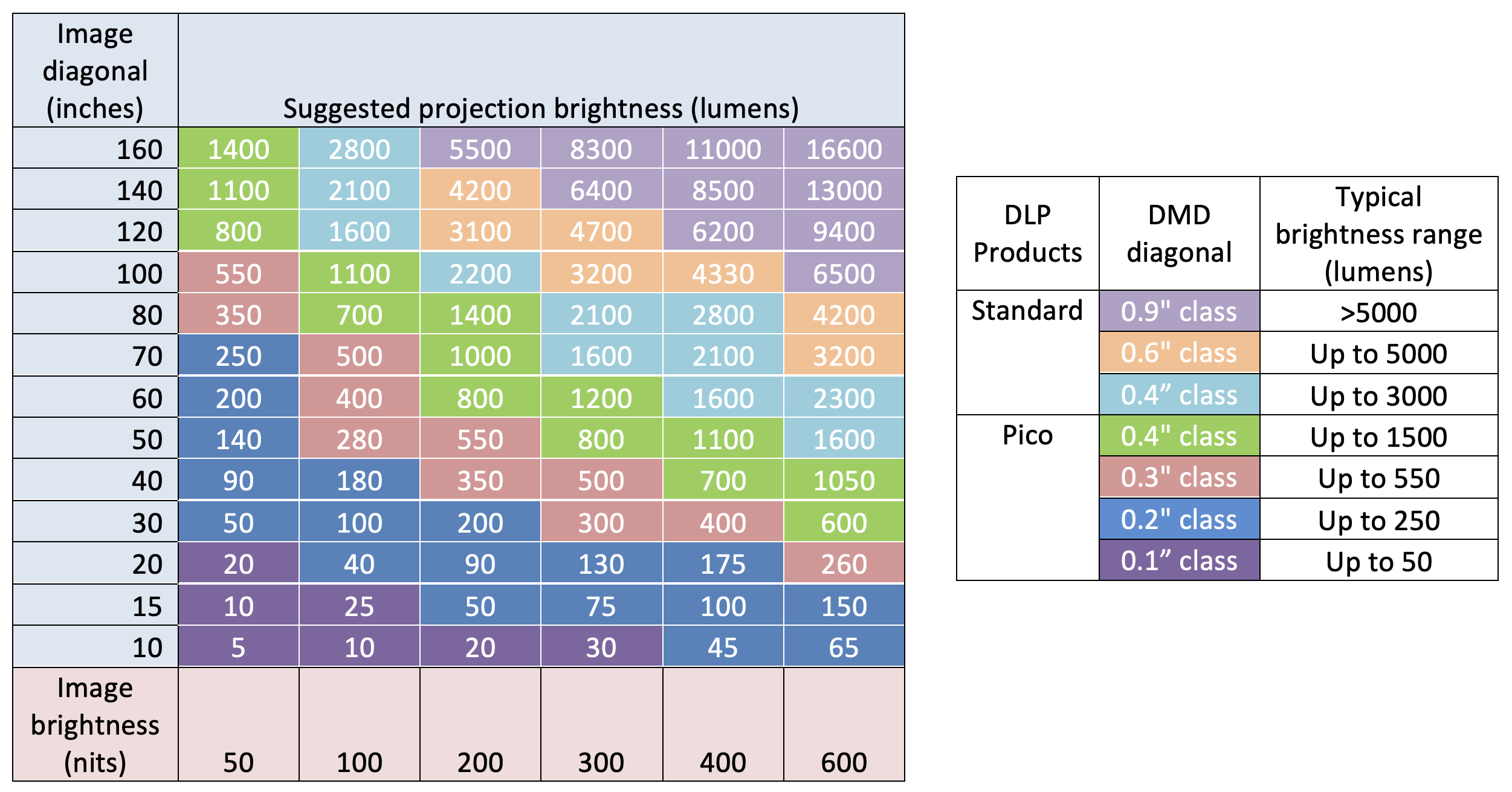DLPA068C November 2019 – May 2022 DLP160AP , DLP160CP , DLP2000 , DLP2010 , DLP230NP , DLP3010 , DLP3310 , DLP470NE , DLP470TE , DLP4710 , DLP471NE , DLP471TE , DLP471TP , DLP472NE , DLP472TE , DLP473NE , DLP473TE , DLP480RE , DLP550HE , DLP550JE , DLP650LE , DLP650NE , DLP650TE , DLP651LE , DLP651NE , DLP660TE , DLP670RE , DLP780NE , DLP780TE , DLP781NE , DLP781TE , DLP800RE , DLP801RE , DLP801XE , DLPA1000 , DLPA2000 , DLPA2005 , DLPA3000 , DLPA3005 , DLPC2607 , DLPC3420 , DLPC3421 , DLPC3430 , DLPC3433 , DLPC3435 , DLPC3438 , DLPC3439 , DLPC6401
4 The Impact of Screen Size
Figure 4-1 provides suggested projection brightness (lumens) as a function of diagonal image size and image brightness (nits) levels from Table 3-1. Additionally, Figure 4-1 references the DLP chip class (categorized by the diagonal of the DLP chip micromirror array, called a digital micromirror device or DMD, measured in inches) associated with each brightness level. You can learn more about the DLP product portfolio here.
 Figure 4-1 Suggested Projection
Brightness for a Combination of Image Sizes and Image Brightness Levels
Figure 4-1 Suggested Projection
Brightness for a Combination of Image Sizes and Image Brightness LevelsThese calculations(4) assume a projection surface with a reflectivity of 80%. When projecting onto a non-ideal surface, the actual lumens desired may be different than those shown above. A typical white wall has a reflectivity of 80% but colored paints can reduce this number. High gain screens are designed to increase reflection in a particular viewing direction and can be used to increase image brightness without increasing projection brightness.